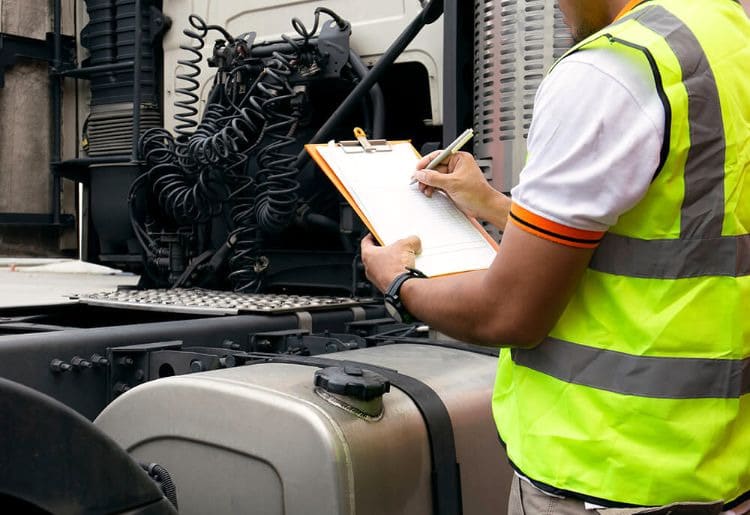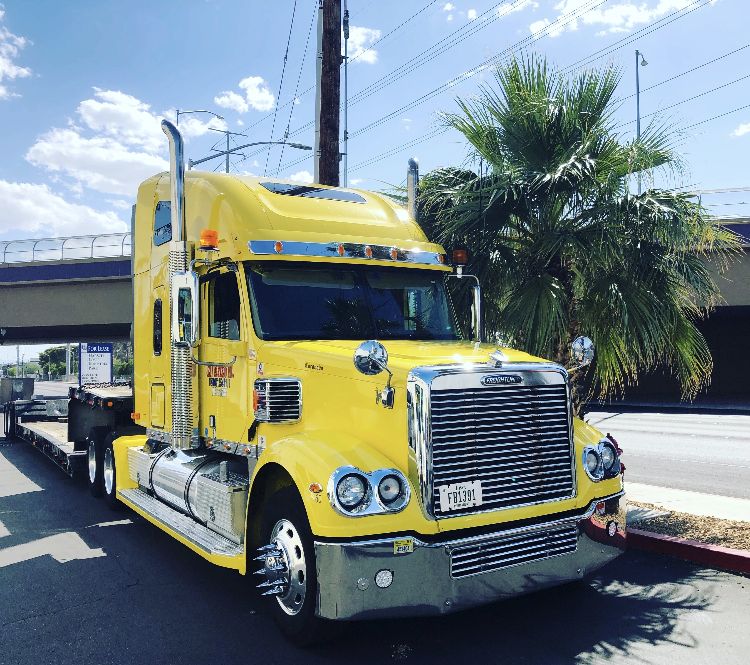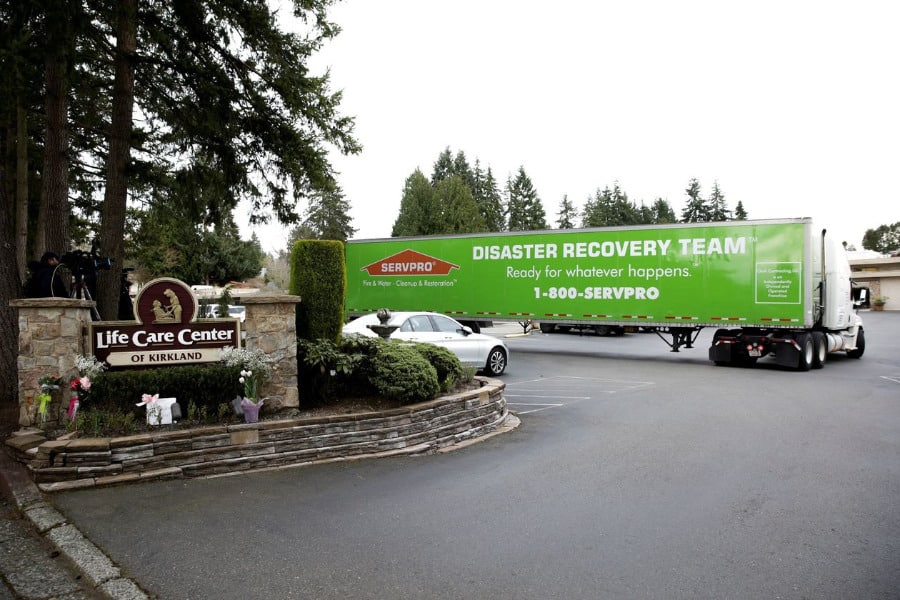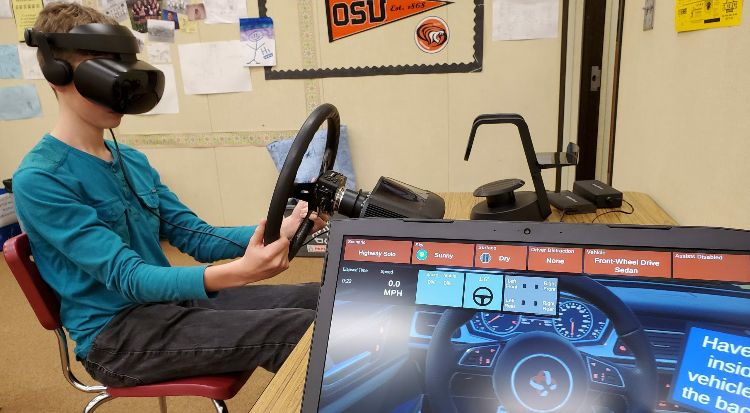Virtual training concepts are not new, but the health scare of the 2020 Covid-19 pandemic opened up distance learning methods to millions of people. Students around the globe, already used to lessons online, had to adapt to full-time home education via their computers, tablets, and smartphones.
Educators worldwide started to develop new, or expand existing, systems to cope with the need to use modern technologies for distance learning. It is widely believed that post-pandemic societies will continue to teach and learn in this way into the future. Trucking is one industry where virtual training has been and will continue to be, of major importance.

Distance Learning
There are two main wings to distance education. The Open University (UK) was one standout example of harnessing home education with workshop live attendance, to achieve degree certifications. Home-studied courses have long become a popular way of learning languages and many other educational and leisure subjects.
The ‘correspondence course’ was, for many years, the prime method of distance learning, relatively inexpensive and convenient, especially for post-school-age learners. Personal computers and cell phones revolutionized both classroom and home learning with online courses and videos replacing or combined with, written course material.

Virtual Training Methods
This second wing of distance learning can be utilized in classrooms or at home using a simulator designed for specific subject usage. The concept of using simulation techniques became important during World War 2 but moved into popular application during the 1960s. Huge advancements in computer technology assisted in later developments. The first flight simulator was conceived earlier in the century by American inventor Edward Link and modern versions have become standard use in aviation training.
Simulation tools gradually became more developed and specialized, benefiting students and staff in the field of medicine, transport, and many industries. The purpose is to provide the same as a ‘hands-on’ experience without the risks involved in direct contact. Practice with models of real apparatus in simulated real-life situations is used to develop skills and improve safety standards.

Uses in the Trucking Industry
Virtual training on simulators has become one of the industry’s priorities in recent years. The explosion in e-commerce created further demand for truck drivers at a time when the industry already had a severe shortage of staff. The pandemic only increased this demand at all levels from long-haul large capacity trucks to local delivery vans as the industry scrambled to keep up. New training regulations due to come into force in 2020 accelerated the modernization of systems including increased use of distance and virtual learning techniques.
As Covid-19 swept across the US, further modifications in training were necessary to comply with laws on social distancing and emergency health and safety precautions. The ongoing effects of the pandemic encouraged more workers to apply for training as truck drivers. As businesses struggled to survive and workers were laid off many sought to find new careers with regular pay and long-term career prospects. Trucking was one option and the industry acted to update training methods and net the new shoal of applicants.

ELDT (Entry Level Driver Training)
In 2017, the FMCSA proposed new training regulations for all workers seeking to gain a CDL (Commercial Driving License) for Class A (or B) vehicles. The FMCSA – Federal Motor Carrier Safety Administration – exists primarily to seek and enforce ways to improve road safety and reduce or eliminate crashes. This is in particular regard to large commercial or people-carrying vehicles.
The new ruling requires a minimum standard of training of over 100 hours of combined classroom learning and practical in-truck instruction. Under ELDT rules training schools and educators are also required to meet higher standards.

The Effect of the Pandemic
Covid-19 social distancing restrictions meant limitations on classroom numbers and truck/road direct teaching practices. Immersive learning with simulators came to the fore as a means of dealing with these limitations while continuing the push for more drivers. By the time the pandemic took hold in the US, some in the industry were not ready for such a radical overhaul of traditional ways. The authorities then took the decision to delay full implementation until 2022.

Immersive Learning in the Truck Industry
Teenagers, the future workforce of the country, have grown up in an age of virtual reality videos and games. Wearing headsets, they experience the ‘real feel’ of being in control of vehicles, weapons, and situations but it is actually a make-believe world. Virtual reality truck training is focused on learning how to operate commercial vehicles safely in real-life, real-time situations.
Classroom tutorials using instruction manuals, videos, and computer imagery cover much of the required training, but simulators can provide more. Immersive techniques create a virtual dialog between the student, the vehicle, and the road. Simulators allow the trainee to feel immersed in authentic conditions and situations and for tutors to gauge the responses and give instructional feedback.

LMS Technology in Trucking Today
LMS (Learning Management System) is part of the new technology that is supporting virtual and distance learning today. Recruitment is the biggest worry in the trucking industry at this time, but retention is high on the list too. Not only are there concerns about experienced drivers leaving the workforce but getting new staff on the road and earning speedily means fewer early exits.
LMS is a software application that allows trainers to plan their own systems. Much of the paperwork and orientation procedures can be made available to new drivers to prepare in advance thus saving time and money. Onwards, LMS assists in tracking and documenting driver progress, giving feedback, and developing additional training modules.
Virtual Reality and Augmented Reality
Both these systems are used in teaching students in many subjects as well as in games and online activities. Augmented relies on real-time images such as on a phone or camera and content can be dropped into the scene. In truck training, the immersion technique of virtual reality is preferred. The trainee, often with the use of a headset, can shut out extraneous noise or distractions.
Fully immersed in a place and time, they are able to react to the events and images as if they were physically present. This is vital for the student and trainer to assess responses and give useful feedback for continued lessons. Some systems can use links to a central computer in the classroom so many trainees can view at the same time. Simulators can work with single student engagement.

Trainee/Trainer Reactions to VT
Much of the data available in this pandemic year of 2020 relates to the enforced home-schooling of young students. Their feedback, though, echoes the feelings of those in adult education or trainee schemes, including trucking.
One of the aims of ELDT is to improve the standards of instructors and training schools. Most responded positively by updating equipment and implementing new technologies and higher standards. However, even some of the most modern facilities still preferred the traditional methods of hands-on training in a real truck and on-road.
Some trainees concurred and felt they learned well directly with a trainer, other trainees, and in-truck. All aspects of operating a vehicle safely could be learned in real-time alongside experienced drivers. The opposite view supports a virtual system where mistakes can happen without damage to property or persons.
Pros
- Training in real-life situations without endangering life or property.
- Practice in conditions not always found in traditional training e.g. snow, ice, animals on the road, rock falls, etc.
- Immersion techniques provide total concentration without interruptions.
- Allows for constructive feedback from tutors.
- Opportunities to repeat the experiences to improve responses and promote safer driving.
- Adaptive learning for individual trainee characteristics and abilities.
- The option of instruction on many different classes of trucks or specific single choice.
- Cost-effective in the long term, reducing paperwork, admin. Staff and time-consuming preparation processes.
- VT appears to have encouraged more women to join the workforce.
Cons
- Not all trainees feel comfortable with the apparatus, some report nausea from using the headset and eyesight problems.
- Varying quality of equipment has yet to provide the full real-feel experience of in-truck training.
- Feelings of isolation have negative effects on some students.
- Expensive initially to companies and individual trainees.
- Experienced drivers and training schools still promote traditional ways as most effective in producing quality drivers.
- False sense of safety provided by simulated driving leads to the doubtful validity of responses.
Takeaway
One of the concerns about using virtual training methods is the lack of sufficient data to prove the effectiveness of the technology on road safety. Statistics appear to show fewer crashes, better driving, and improved responsibility on the road. However, this may relate to the overall improvements in the industry since the ELDT directive was first published.
VT is an accepted tool for effective training of airline pilots and many advocate the adoption of this method as mandatory for truck drivers. While the pandemic lasts this may be one of the most useful aids in promoting recruitment and preparing newcomers to the industry. Whether or not this form of instruction will replace traditional methods remains to be seen.

Geoff is a freelance writer at TruckersTraining.com with 20+ years of experience driving trucks and buses, dispatching, supervising, and training commercial driving teams. His expertise is writing topics on the transportation and trucking industry, and information technology trends.